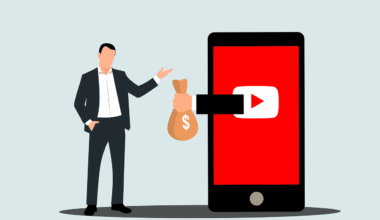Storytelling Frameworks to Accelerate Your Sales Funnel
In today’s competitive market, integrating storytelling into your sales strategy can profoundly impact outcomes. Utilizing a storytelling framework allows sales teams to connect emotionally with potential buyers. The reason storytelling is so effective lies in its ability to create relatable scenarios that resonate with audiences. By structuring narratives that highlight customer challenges and solutions provided by your product, salespeople can actively engage prospects. When potential buyers hear testimonials and success stories, they envision their experiences. These frameworks should encompass elements such as a relatable hero, compelling conflict, and a satisfying resolution. Successful storytelling aligns with potential customers’ needs while cultivating an emotional bond that drives trust and commitment. Additionally, employing data and research to support key points ensures credibility, enhancing the narrative’s effectiveness. The goal of leveraging storytelling in sales strategies is to ignite curiosity and inspire action, ultimately leading prospects to make informed decisions that favor your product or service. Integrating visual aids such as infographics and videos alongside storytelling can amplify the overall impact of your message. This integration allows potential buyers to absorb information more effectively while maintaining sustained interest.
Harnessing the power of storytelling in your sales approach requires a structured mindset. By developing a detailed narrative framework, teams can ensure consistency and clarity in messaging. Begin by defining your target audience and identifying their pain points. With this knowledge, sales professionals can craft compelling stories that speak directly to the prospect’s needs and desires. Each story should reflect the brand’s values and mission, creating a seamless connection between the customer and your offerings. A good storytelling framework often involves three key stages: setup, confrontation, and resolution. In the setup phase, introduce a character, typically the customer, and set the context by elaborating on their challenges. The confrontation stage underscores the struggle or obstacles faced, encapsulated with rich details, fostering empathy. Finally, the resolution provides a satisfying conclusion, showcasing how your product addresses the challenges presented. This format not only captivates the prospect but also arms salespeople with persuasive narratives to win the deal. Investing time in building a robust storytelling framework leads to more meaningful conversations, lasting relationships, and ultimately, greater conversions in the sales funnel.
Success Stories: The Impact of Storytelling in Sales
The effectiveness of storytelling frameworks in sales can be seen in numerous successful case studies across different sectors. Companies like Apple and Nike have long embraced storytelling in their marketing and sales tactics, emphasizing connection and identity. Often, these companies focus on creating narratives that reflect real-life scenarios their consumers face. For example, Apple’s story revolves around innovation and creativity, inspiring individuals to think differently while providing solutions to everyday problems. Similarly, Nike masterfully shares stories that resonate with ambition and perseverance. By aligning the brand’s narrative with consumers’ aspirations, they cultivate a loyal customer base. Documenting real customer experiences through testimonials adds further authenticity to your story. Showcasing how a product has changed lives makes it relatable and appealing, reinforcing the value proposition. Customers are more likely to become promoters when they see others benefiting from your product. Incorporating such success stories into the sales conversation not only validates claims but also instills confidence and trust in potential buyers. Crafting authentic narratives that highlight tangible results generates leads and maintains a strong brand reputation.
To effectively utilize storytelling frameworks, sales teams must undergo training to enhance their narrative skills. One essential aspect is understanding the components of a good story, including the emotional appeal and rhetorical devices that can captivate the listener. Workshops that focus on storytelling techniques can deliver insights into pacing, tone, and engagement strategies that keep prospects interested. Practicing storytelling helps salespeople adapt narratives to different situations and audiences—a crucial skill in dynamic sales environments. Developing these skills within the sales team translates to more confident presentations and effective sales pitches. Role-playing scenarios can assist in sharpening storytelling abilities, allowing sales reps to receive constructive feedback. As a result, firms can foster a culture of continuous learning and adaptation. Embracing storytelling as an integral part of sales training can empower teams to narrate their unique value propositions creatively. Additionally, encouraging collaboration across departments can lead to richer stories that highlight diverse perspectives. The convergence of experience and creativity allows for multifaceted narratives that resonate with prospects, ultimately streamlining the sales funnel and enhancing conversion rates.
Integrating Digital Tools into Your Storytelling
The digital marketing landscape has revolutionized how storytelling is integrated into the sales process. Social media platforms and websites provide endless opportunities for brands to share their narratives with a wider audience. Leveraging digital tools such as video content, blogs, and podcasts can amplify the effectiveness of storytelling frameworks. Video marketing, in particular, offers an engaging format that captures attention quickly, making it easier to convey complex narratives. Creating short films or animations that illustrate customer success stories can significantly enhance viewer engagement. Moreover, blogs allow for detailed storytelling with opportunities for visual elements, infographics, and links to customer reviews that improve credibility. Tailoring these narratives to different digital platforms ensures that they resonate with the target audience and prompt action. It’s essential to adapt stories for mobile users as well, taking into account shorter attention spans. Consistency in tone and style across channels further reinforces brand identity. Ultimately, embracing digital tools in storytelling not only helps in accelerating the sales funnel but also builds a robust online presence, leading to higher engagement rates.
Analyzing the effectiveness of your storytelling strategy is crucial in fine-tuning sales approaches. Employing metrics and KPIs can help evaluate how well stories resonate with potential customers. For instance, measuring engagement rates, feedback, and conversion rates provides insights into the effectiveness of the narratives being shared. Conducting surveys and gathering analytics from platforms allows companies to understand which stories attract interest and which fall flat. Based on insights gained, sales teams can optimize their storytelling frameworks, adjusting narratives to better suit evolving audience preferences. This practice creates a cycle of continuous improvement, where insights and feedback fuel future storytelling efforts. Setting clear objectives and regularly assessing performance will ensure that your storytelling strategy remains aligned with market demands. Implementing A/B testing when introducing new storytelling formats or narratives can also determine effectiveness and help track changes in buyer behavior. Leaders should encourage open conversations about which stories work best in specific contexts, thus fostering a collaborative and adaptive culture within sales teams. This engagement ensures that every team member contributes to refining the storytelling approach, facilitating a unified and cohesive sales strategy.
Conclusion: The Future of Storytelling in Sales
Looking ahead, the role of storytelling in sales strategies will only expand as companies strive to differentiate themselves in crowded markets. The ability to convey authentic narratives effectively will be a valuable asset in developing brand loyalty and trust. Embracing technological advances can lead to innovative storytelling methods, further enhancing engagement. Augmented reality and interactive experiences hold immense potential for creating immersive stories that resonate on a personal level. Future sales strategies should prioritize empathy, focusing on understanding consumer behavior and delivering custom-tailored narratives. Meeting prospects at their emotional crossroads, where they face decisions or challenges, will reinforce the need for solutions. By outlining branding stories that illustrate how products can tackle real-life problems, sales teams position themselves as trusted advisors. Ultimately, organizations that master the art of storytelling in sales will stand out in the market. This emphasis on creating emotional connections will lead to sustained relationships, driving repeated business for companies. Sales professionals who embrace storytelling frameworks now will be preparing for the future by engaging customers meaningfully and efficiently, enhancing their sales funnel’s potential for success.


